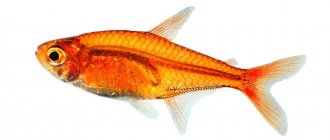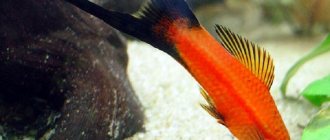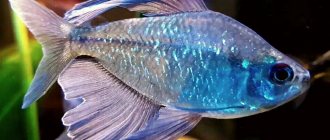Compared to alicyclic hydrocarbons, the issues of stereochemistry and conformational analysis of aliphatic compounds are much less developed. However, despite the apparent apparent simplicity, conformational analysis of aliphatic systems is very complex and requires considerable attention from researchers of various profiles. It must be borne in mind that great advances in the field of conformational analysis of cyclic systems were largely predetermined by the rigidity of these compounds. At the same time, the conformational mobility of open chain hydrocarbons creates additional difficulties in studying their stereochemical features.
Note 1
Only recently have studies begun to appear devoted to the properties of individual spatial isomers of alkenes, the description of the optical properties of conformationally rigid enantiomers, as well as studies of the relative thermodynamic stability of isomers. All these issues related to the so-called static stereochemistry of alkanes will be presented in this chapter.
Are you an expert in this subject area? We invite you to become the author of the Directory Working Conditions
The task of static stereochemistry in this case includes elucidating the stable conformational and configurational states of unsaturated aliphatic systems, considering the characteristic features of their spatial structure, and elucidating the influence of the spatial structure of molecules on various properties of compounds as a whole. Of particular importance is the determination of the thermodynamic stability of individual isomers, since of all physicochemical indicators, the relative thermodynamic stability of hydrogen carbons is most closely and unambiguously related to their spatial structure.
The thermodynamic stability of a substance characterizes the possibility of the formation of this substance or its transformation into another substance or substances under certain conditions, if the system has reached equilibrium. The kinetic stability of a substance refers to the rate at which transformations leading to equilibrium can occur.
The thermal stability of hydrocarbons makes it possible to judge the further possibility of their participation in chemical reactions and predict the likelihood of the formation of various compounds under given conditions.
Finished works on a similar topic
Course work Thermodynamic stability of alkenes 410 ₽ Abstract Thermodynamic stability of alkenes 240 ₽ Test work Thermodynamic stability of alkenes 200 ₽
Receive completed work or specialist advice on your educational project Find out the cost
The thermal stability of hydrocarbons decreases with increasing length of the hydrocarbon radical. At low temperatures, the differences in the properties of alkanes, alkenes, alkynes, arenes and cycloalkanes are most significant. Alkanes have the greatest thermal stability. As the temperature increases, the Gibbs energy of formation of saturated hydrocarbons increases. Moreover, their theoretical thermal stability decreases with increasing hydrocarbon chain length. In cyclic alkanes, the Gibbs energy of formation also increases significantly with increasing temperature, in contrast to alkenes and arenes, for which the effect of temperature on the Gibbs energy is weakly expressed. In the case of alkynes, an inverse relationship is observed. At low temperatures, the differences in properties are most noticeable. As the temperature increases, the differences decrease.
Coefficient 1[ | ]
The uniqueness of an object is established by several prefixes.
Mono-
(from Ancient Greek μόνος "one") used in scientific and technical terms (monoculture, monocycle), usually omitted in chemical nomenclature, but sometimes used to avoid confusion: for example, "carbon monoxide" for clear distinction from the more common dioxide carbon.
Uni-
(from Latin unus "one") is used both in the meaning of "single" (unicycle) and "single".
One-
used to denote the singular in terms with Russian etymology (odnodvortsy).
Gene-
,
un-
is used to add one to a complex prefix, as in the case of the formation of “heneicosa-” (21) on the basis of “eikos-” (20) (for example, heneicosaberylliumpentanikel, Be21Ni5).
Table of basic parameters of maintenance, care and nutrition:
| What should be the volume of the aquarium? | 10 liters per individual |
| What should the temperature be? | from +22-27°C |
| What should the pH be? | from 6-7 pH |
| What should the water hardness be? | up to 15°dH |
| What should the substrate be? | no sharp corners |
| What kind of lighting should there be? | moderate |
| What should be the movement of water | moderate |
| Maximum fish size | up to 8 cm (depending on the type) |
| What does it eat? | dry, live and frozen food |
| Type of aquarium fish | non-aggressive |
| Who is compatible with in an aquarium? | get along with small non-aggressive fish species |
Coefficient 2[ | ]
Factor 2 is conveyed by many prefixes.
Di-
(from ancient Greek δίς “twice”) - usually in Russian the prefix has the meaning “twice”, “double” (for example, digraph), in chemical nomenclature it is used to indicate the number of
unsubstituted
radicals or compounds (biphenyl). However, the prefix included in the Russian roots may also have other meanings and etymologies [1]:
- from ancient Greek δία, "through" (loses the last vowel if the root begins with a vowel), for example, "dielectric".
- from lat. dis- in the meaning of "separation", loses the last consonant before some other consonants, for example, "divergence".
Bi-
(from Latin bis “twice”) usually indicates two objects or characteristics (bipedalism), often different (binomial, bimetal).
In chemical nomenclature, indicates two identical rings linked by a single or double bond (biphenyl). Bis-
in chemical nomenclature refers to two identical, equally substituted radicals (for example, bis-(2-chloroethyl)ethylamine).
Duo-
(Latin duo “two”)[2], for example duocillin (a veterinary drug) or the duocentricity of the English language.
Double/double attachments
with Russian etymology are used in Russian versions of the terms (“binomial”, “bipedal”). In chemical nomenclature they are used in the names of acids and salts (for example, sodium bicarbonate).
Main article: Ortho-, meta-, para- (chemistry)
Prefixes ortho-/meta-/para-
in chemical nomenclature, the position of a pair of substituents on a benzene ring is determined and thereby indicates two substituents (for example, ortho-xylene).
Before-
used to add two to a complex prefix, as in the case of forming "dodeca-" (12) from the base "deca-" (10) (for example, dodecaphony).
Maintenance and care
This species does not like to be left without its relatives, so they need to be kept in schools: 10 - 20 fish. If Tetra is alone, she will be aggressive towards the other inhabitants of the aquarium and will boldly guard her space, not letting anyone in.
The container should be planted with unpretentious aquarium plants in which you can hide, such as: Ludwigia, Ambulia, Elodea, Vallisneria. Lighting should be moderate. Optimal water temperature is from +22-27° C. Acidity is from 6-7 pH. Hardness up to 15° dH.
Odds greater than 2[ | ]
Multiplying prefixes for coefficients greater than 2 are formed according to schemes similar to those used in the case of coefficient 2:
- prefixes derived from Greek numerals (for example, penta-
, “five”) are used in scientific and technical terms (pentahedron, pentode) and everyday words (“pentagram”).
In chemical nomenclature, they are used to indicate the number of unsubstituted
radicals or compounds (triphosphorus pentanitride); - prefixes derived from Greek adverbs of quantity (for example, tetrakis-
, "four times") are used in chemical nomenclature to indicate the number of identical, complex radicals (for example, tetrakis(triphenylphosphine)palladium); - prefixes derived from Latin adverbs of quantity (for example, ter-
, “three times”) in chemical nomenclature indicate identical rings (terphenyl); - prefixes with Russian roots are used in Russian versions of terms (hexagon, uranium hexafluoride);
- Separate prefixes derived from Latin numerals are also used (for example, quadri-
, “four” - quadricycle).
The first few multiplying prefixes are shown in the table below.
| Coeff. | Russian prefix | From lat. adv. | From lat. number | From Greek number | From Greek adv. |
| 1 | one- | uni- | mono- | ||
| 2 | two-/two- | bi- | di- | ||
| 3 | three-/three- | ter- | three- | three- | tris- |
| 4 | four- | quater- | quadri- | tetra- | tetrakis- |
| 5 | five- | quinkie- | penta- | pentakis- | |
| 6 | six- | sexy | hexa- | hexakis- | |
| 7 | seven- | septi- | hepta- | heptakis- | |
| 8 | eight- | octi- | octa- | octakis- | |
| 9 | nine- | noni- | nona- (also ennea-) | nonakis- | |
| 10 | ten- | deci- | deca- | dekakis- |
In practice, the use of prefixes continues far beyond the previous table, especially in chemistry, see, for example, genpentacontasilvertetradecadysprosium (5114). B. P. Nikolsky gives the following meanings:
| Coeff. | Console | Coeff. | Console | Coeff. | Console |
| 11 | undeka- (gendeka-) | 21 | geneikosa- | 31 | gentriaconta- |
| 12 | dodeca- | 22 | dokosa- | 40 | tetrakont- |
| 13 | trideca- | 23 | tricot- | 41 | gentetraconta- |
| 14 | tetradeca- | 24 | tetrabraid- | 50 | pentaconta- |
| 15 | pentadeca- | 25 | pentacosa- | 60 | hexakonta- |
| 16 | hexadeca- | 26 | hexakosa- | 70 | heptakont- |
| 17 | heptadeca- | 27 | heptakosa- | 80 | octaconta- |
| 18 | octadeca- | 28 | octakosa- | 90 | Enneakonta- |
| 19 | nonadeka- | 29 | nonakosa- | ||
| 20 | eikosi- (eikosa-) | 30 | triaconta- |
Tetra Lifespan and Diseases
The lifespan is determined by several factors:
- required temperature, acidity, hardness;
- volume of the aquarium (personal space of each individual);
- weekly water changes;
- do not overfeed.
Tetras live in an aquarium for 5–6 years, but there are long-livers – up to 8 years.
The diseases of all aquarium fish are the same, and the same applies to Tetras. They get sick from:
- improper aeration;
- temperature, acidity, hardness;
- filtration;
- aquarium volumes;
- stress;
- when living with aggressive “neighbors”.
Due to improper maintenance, poisons appear: nitrites, nitrates, ammonia, which have a detrimental effect on the life and health of the inhabitants. Proper maintenance of the environment and cleanliness solve many problems with fish diseases.
Conclusion
Tetra is an unpretentious fish, the maintenance of which is not difficult; even an inexperienced aquarist can keep it. But for all its unpretentiousness, Tetra requires care. Only an attentive, sensitive, reverent approach can make aquarium inhabitants healthy and happy.
Together, with a hyphen or with brackets[ | ]
The subtle difference between Greek and Latin numerals and the use of parentheses can be illustrated using the example of trimethylene and tris(methylene)a[3]:
- trimethylene C3H6 is a cycloalkane and contains a ring of three CH2 components.
- if the substance contains methylene three times without forming a ring, then, to avoid ambiguity, the prefix “tris-” and usually parentheses are used to emphasize that the prefix refers specifically to methylene, for example, the anion P(CH2)3 - tris(methylene) metaphosphate.
What to feed and with whom is it compatible in the aquarium?
Any type of dry or frozen food is suitable; it should be fed in addition to the main diet with herbal supplements and crushed oatmeal. Without additional plant nutrition, it may begin to eat the edges of algae.
The most common food is TetraMin flakes, which contain a large amount of prebiotics, essential substances for long life of fish, and stay on the surface of the water for a long time. Tetras have a good appetite, it is important not to overfeed or overeat.
Compatible with all non-aggressive colorful fish of the same or almost the same size type: Danios, Swordtails, Guppies, Platies, Norman's Blueeyes, Cardinals, Mollies, Neons, Acantophthalmus, Catfish, aquarium shrimp.
Notes[ | ]
- Bykov A.A.
dis- // Anatomy of terms. 400 word-forming elements from Latin and Greek: educational dictionary-reference book. - M.: NC ENAS (Russian). — 2007.. // Anatomy of terms. 400 word-forming elements from Latin and Greek: educational dictionary-reference book. - M.: NC ENAS. Bykov A. A. 2007. - Duo- (Duo-) // Medical terms (Russian). - 2000.. // Medical Dictionary, 2000.
- Simbirskikh E. S., Shelkovnikova N. V. Nomenclature of organic compounds: Textbook. - Michurinsk, Naukograd: Publishing house of the Federal State Educational Institution of Higher Professional Education MichSAU, 2006. P. 24.
Literature[ | ]
- B. P. Nikolsky. Chemist's Handbook. L.: Chemistry, 1966. pp. 118-119.
- Di... (prefix)
- article from the Great Soviet Encyclopedia. - Bi...
- article from the Great Soviet Encyclopedia. - Mono...
- article from the Great Soviet Encyclopedia. - Uni...
- article from the Great Soviet Encyclopedia. - Chemical nomenclature
- article from the Great Soviet Encyclopedia. - D. G. Kim, E. V. Smolina. Nomenclature of organic compounds: Textbook. allowance. Ministry of Education Ros. Federation. Chelyab. state Univ., 2001.
- Simbirskikh E.S., Shelkovnikova N.V. Nomenclature of organic compounds: Textbook. – Michurinsk, Naukograd: Publishing House of the Federal State Educational Institution of Higher Professional Education MichSAU, 2006. – 71 p.











